The many issues touched upon in Wim van
Binsbergen's research and publications often invite specific
comments and queries from site visitors. Often such exchanges
have a more than personal relevance, and often others would like
to join in. This is now possible with the new Shikanda Forum and
Message Board. 
| date |
topic, links |
details, background illustrations etc.
|
| current
year: 2010 (would have begun above this line);
click here for Current topicalities 2010- |
| December 2009-March 2010 |
 Archaic
cosmology: Rain and its Adversary, the Rainbow
|
February
2010: publication of
van Binsbergen, Wim, 2010, 'Short note on Kings
as “tears of the Rain” and Mankind as
“tears of the Sun”: Excerpt of
“The case of kings as Tears of Rain (Nkoya,
Zambia) / humankind as Tears of Re' (Ancient
Egypt)”, i-Medjat: Papyrus 'electronique
des Ankhou: Revue caribéenne pluridisciplinaire
éditée par l’Unité de Recherche-Action
Guadeloupe (UNIRAG), 4, février 2010: p. 7
(click for PDF) |
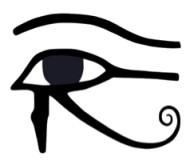 The eye of Horus
|
 |
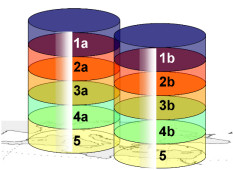 The five-tiered
ethico-linguistic system of
the Bronze-Age Mediterranean, arguably
including a proto-Bantu / Khoisan substrate

Stealing the
moon by building Kapesh kamunungampanda,
'The Kapesh tower from forked branches', in a
major Nkoya
myth of kingship, Zambia
|
In February 2010,
Wim van Binsbergen will be 63 years old. It is
time to begin to wind up the research projects in
which -- with the constant support of the African
Studies Centre, Leiden, and with great
inspiration from the Netherlands Institute for
Advances Studies, the Philosophical Faculty
Erasmus University Rotterdam, and the Harvard
Round Table on Comparative Mythology -- he has
engaged for the past twenty years: ever since his
unsettling transcultural experiences during
anthropological fieldwork inFrancistown,
Botswana, brought him to radically reconsider
standard forms of North-South knowledge
construction in anthropology and oral history,
and to engage in transcontinental explorations
aimed at ascertaining the pre- and
proto-historical continuities between Africa and
other continents -- ultimately in a bid to
establish the empirical foundations for the
thesis of the fundamental unity of humankind.
Around the turn of 2010 Wim van Binsbergen has
been working on the finalisation of a number of
books and articles that are scheduled for
publication in the course of that year, notably:
van Binsbergen, Wim M.J.,
‘The continued relevance of Martin
Bernal’s Black Athena thesis:
Yes and No’
van Binsbergen, Wim M.J.,
‘Before the Pre-Socratics: The evidence
of a common elemental transformational cycle
underlying Asian, African and European
cosmologies since Neolithic times’
van Binsbergen, Wim M.J.,
‘The continuity of African and Eurasian
mythologies: As seen from the perspective of
the Nkoya people of Zambia, South Central
Africa’, in: van Binsbergen, Wim M.J.,
& Venbrux, Eric, eds., New
Perspectives on Myth: Proceedings of the
Second Annual Conference of the International
Association for Comparative Mythology
van Binsbergen, Wim M.J., Cluster
analysis assessing the relation between the
Eurasian, American, African and Oceanian
linguistic macro-phyla: On the basis of the
distribution of the proposed *Borean
derivates in their respective lexicons: With
a lemma exploring *Borean reflexes in
Guthrie’s Proto-Bantu
van Binsbergen, Wim M.J., Towards
the Pelasgian hypothesis: An integrative
perspective on long-range ethnic, cultural,
linguistic and genetic affinities
encompassing Africa, Europe, and Asia
van Binsbergen, Wim M.J., Out
of Africa or out of Sundaland: Mythical
discourse in global perspective
van Binsbergen, Wim M.J., Joseph
Karst: Pioneering long-range approaches to
Mediterranean Bronze Age ethnicity
van Binsbergen, Wim M.J.,
'Reconsidering spiked wheel traps: An
exercise in global cultural distribution
analysis'
van Binsbergen, Wim M.J.,
'Towards the prehistory of African
divination'
van Binsbergen, Wim M.J.,
‘Building with skulls, and stealing the
moon: Aspects of the continuity of African
and Eurasian mythologies: As seen from the
perspective of the Nkoya people of Zambia,
South Central Africa’, in: Venbrux,
Eric, & van Binsbergen, Wim M.J., eds., Studies
in Comparative Mythology
van Binsbergen, Wim M.J.,
& Venbrux, Eric, eds., New
Perspectives on Myth: Proceedings of the
Second Annual Conference of the International
Association for Comparative Mythology
Venbrux, Eric, & van
Binsbergen, Wim M.J., eds., Studies in
Comparative Mythology
van Binsbergen, Wim M.J.,
& Woudhuizen, Fred, Ethnicity in
Mediterranean proto-history
draft versions of
many of these texts have already been made
available from this website; specific hyperlinks
to these earlier versions will soon be provided,
while their imminent publication is pending
|
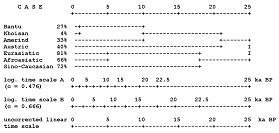 Dendrogram
of the proposed relationships between
linguistic macrophyla under Starostin's *Borean
hypothesis, including the likely place of Bantu
and Khoisan, with various alternative time scales
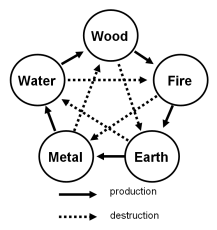
A schematic transformative
cycle of elements,
such as arguably underlies the Taoist
cosmology, the Nkoya clan system in South
Central Africa, and the pre-Socratic /
Aristotelian four-element system
|
| In Wim van Binsbergen's most
recent work, a central role is played by his Pelasgian
Hypothesis as the culmination of his
transcontinental research, over the past 20
years, into geomantic divination, mankala
games, leopard-skin symbolism, comparative
mythology, language macrophyla, the spiked wheel
trap, and other formal systems demonstrably
linking Africa and the other two continents of
the Old World -- against the background of the
increasingly detailed and convincing long-range
insights molecular genetics, comparative and
historical linguistics, and comparative
mythology, are offering into the past of
Anatomically Modern Humans, especially from the
Upper Palaeolithic onwards. Wim van Binsbergen's
imminent publications scheduled for 2010 are
intended to present most of this work in
progress. Here the Pelasgian Hypothesis will
appear as a viable alternative, not only for
Stephen Oppenheimer's intriguing and perceptive
Sunda thesis, but especially for Martin Bernal's Black
Athena thesis. The Pelasgian Hypotheis lacks
the reductionist (albeit refreshingly
antihegemonic and anti-Eurocentric)
Egyptocentrism or Afrocentrism of Bernal's work,
and instead highlights the exceptional continuity
and creativity of the Mediterranean-centred
Pelasgian Realm -- as a major seedbed even of
African languages and cultures; in the process,
much new light is cast upon one of the most
formative periods of global proto-history: the
Sea Peoples Episode at the end of the Bronze Age.
|
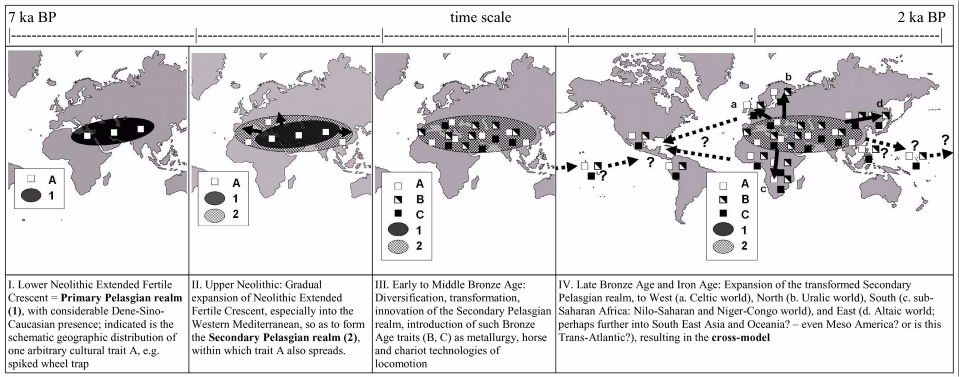
|
|
|
| November 2009 |
In this
period Wim van Binsbergen revised his 2008 Ravenstein paper, and in the process drafted a full-length book
MS on The transcontinental continuity of Old World
mythologies: As seen from the perspective of the Nkoya
people of Zambia, South Central Africa
 |
In this period Wim van
Binsbergen worked with his fellow-convenor Eric
Venbrux, and with Kirsten Seifikar as copy
editor, on the publication of the 2nd Annual
Conference of the International Association for
Comparative Mythology, Ravenstein, the
Netherlands, 2008; the full Proceedings are to be
published in the first months of 2010; an edited
book containing a selection of the conference
papers is to come out later in 2010. |
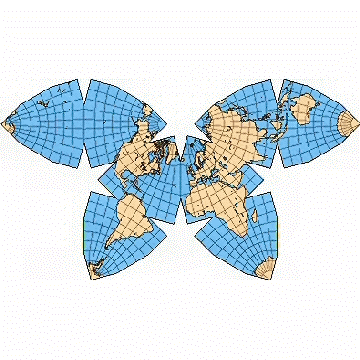 |
 |
Wim van Binsbergen acted as External
Examiner for the Department of Anthropology,
Rhodes University, Grahamstown, South Africa, in
regard of a PhD thesis on the ecstatic cults of
aquatic divinities in Southern Africa the Ezelsjagpoort
'mermaid' panel after Dowson 1988
|
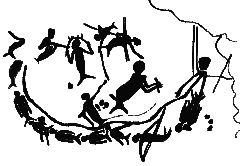 |
|
| October 2009 |
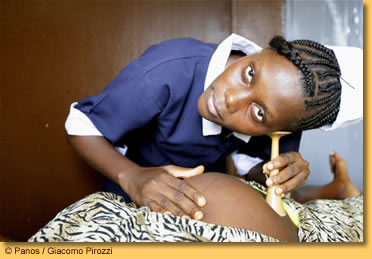 listening to a foetus' heart tones in
modern health care in Liberia; source: http://www.un.org/ecosocdev/geninfo/afrec/vol21no4/214-maternal-health.html
|
At the
invitation of the Utrecht Student Association for
International Relations (Utrechtse
Studentenvereniging voor Internationale
Betrekkingen. SIB-Utrecht).Wim van Binsbergen
will give a lecture entitled 'Contrasting modern
western health care and African traditional
health care', place: Spanish Cultural
Centre, Domplein 3, Utrecht, the Netherlands
time: Tuesday 27 October 2009, 19:30 hrs
klik hier voor de PowerPoint presentatie
van de voordracht:
van Binsbergen, Wim M.J., 2009, 'Traditionele
Afrikaanse gezondheidszorg en Westerse
gezondheidszorg: Overeenkomsten en verschillen',
lezing SIB-Utrecht, 27 oktober 2009
|
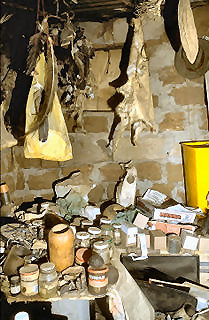
The surgery of traditional doctor
Mr Smarts Gumede, one of Wim van
Binsbergen's principal teachers of traditional
medicine in Botswana |
 
as part of the www.shikanda.net
portal, two new web pages were initiated:
NEW Geomancy in Africa
and world-wide: Comparative studies in history,
anthropology and intercultural philosophy
(webpage under construction), and
NEW Nederlandstalige
wetenschappelijke en spirituele teksten van Wim van
Binsbergen (webpage under
construction, in Dutch)
 
Wednesday 14 October 2009: Wim van Binsbergen is one
of the speakers (along with M. Michon, F. van Olden, and
E. van Ommering) at an introductory meeting on
anthropology as a career perspective, at the department
of anthropology, Free University, Amsterdam (where Wim
van Binsbergen was Professor of Ethnic Studies
1990-1998); room 6A04, 13:30 - 15:15.
 
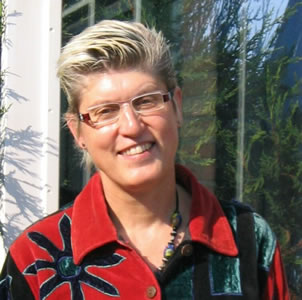 |
In de serie 'Deuren
naar de Andere Wereld' wordt Wim van Binsbergen
op 11 oktober geinterviewd door voodoopriesteres
en dichteres Maria van Daalen.
Theater de Roestbak
Markt 1
Almere Haven
Aanvang 15.00 uur Toegang gratis
Zie ook: www.corrosia.nl;
informatie en reservering op telefoonnummer:
(036) 521 56 48 en via reserveren@corrosia.nl
picture source: http://blogsimages.skynet.be
|
 
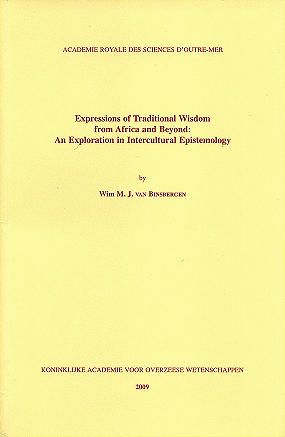 |
in this month the following book was
published:
van Binsbergen, Wim M.J., 2009, Expressions
of traditional wisdom from Africa and beyond: An
exploration in intercultural epistemology,
Brussels: Royal Academy of Overseas Sciences /
Academie Royale des Sciences d’Outre-mer,
Classes des Sciences morales et politiques,
Mémoire in-8º, Nouvelle Série, Tome 53, fasc.
4, 68 pp. (click for full-text
PDF)
ABSTRACT
KEYWORDS. — Epistemology; Tradition;
Phronesis; Africa; Intercultural.
Wisdom is initially defined (cf.
Aristotle) as creative practical
knowledge that allows one to negotiate
the contradictions of human life
(especially in less rulegoverned domains
manifesting uncertainty and incompatible
multiple truths), thus accepting that
human life is social and finite. After
indicating (1) the resilience of wisdom
as a topic in modern thought and science,
an overview follows on wisdom in various
periods and regions of the world (2). (3)
The dilemma of expression of wisdom:
while scholarship thrives on specialist
explicit language use, wisdom is often
secret and risks being destroyed by
expression and translation. Section (4)
offsets expressions of traditional wisdom
against four modes of 'tacit modern
unwisdom' (in such fields as corporality,
conflict regulation, the concept of mind,
and myth). (5) Can wisdom be transmitted
interculturally, within and outside an
academic context, and by what mechanism
of situational oppositional framing is
traditional wisdom both an alterized
object of study and a site of
identification and encounter? (6)
Defining the specific difference between
scientific and wisdom modes of knowing,
in the former's reliance on standard,
repetitive, intersubjective procedures of
knowledge formation embedded in limiting
conditions. (7) The four modes of tacit
modern unwisdom (cf. 4) are then
contrasted with African perspectives. (8)
Finally, intercultural philosophy is
argued to spring from a situation
(today's globalization) where Western
mainstream philosophy has to give way to
a wisdom perspective as defined above. |
|
|
| September 2009 |
Now published: van Binsbergen, Wim, and Eric
Venbrux, 2009, ‘Comparative Mythology: A Conference
Report (Second Annual Conference of the International
Association for Comparative Mythology (IACM), Ravenstein,
the Netherlands, August 19-21.2008’, Anthropos:
Internationale Zeitschrift für Völker- und
Sprachenkunde / International Review of Anthropology and
Linguistics / Revue Internationale d'Ethnologie et de
Linguistique, 104: 561-564 (click for PDF) |
| August 2009 |
Launching
a new series: Papers in Intercultural Philosophy --
Transcontinental Comparative Studies 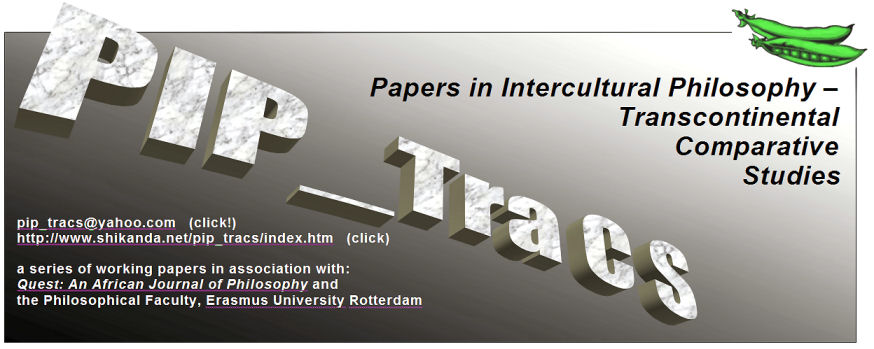
read this new series launching statement --
click here
|
| June-July 2009 |
During this period Martin
Doornbos & Wim van Binsbergen further
finalised their book manuscript
Researching Power and Identity in African State
Formation
|
| |
|
| During this period Wim van Binsbergen
completed the draft of a new book manuscript: Towards the Extended Pelasgian
Hypothesis
An integrative perspective on ethnic, cultural,
linguistic and genetic affinities encompassing
Africa, Europe, and Asia from the Neolithic
onwards
in which much of his transcontinental research of
the last fifteen years reaches a conclusive and
integrated statement, with major implications for
the place of Africa in global cultural history,
the Black Athena debate, the
interpretation of the ethnicity of the Sea
Peoples (Late Bronze Age Mediterranean), and the
historical appreciation of the Pre-Socratics
which are commonly considered the beginning of
Western philosophy.
click here for an outline of this book
click here for a summary of the
background of this book within Wim van
Binsbergen's ongoing research work

|
| Pardivesture is the ritual
wearing of leopard skins. These skins have complex
connotations of granulation /
speckledness, rain, dispersion, the
star-spangled sky, night, evil,
femininity, subaltern status. They are
symbolically juxtaposed to lion skins,
which are light and evenly coloured and
have the opposite connotations of
daylight, sun, good, male, etc.
Pardivesture is one of several dozens of
traits that have circulated in the
Extended Pelasgian Realm (Maghreb to
China) since the Neolithic; that were
greatly transformed and augmented during
the Bronze Age; and that from the Late
Bronze Age onward were dispersed in all
directions, west into the Celtic world,
North into the Germanic and Uralic world,
South into the Bantu-speaking world, and
East into the Eurasian Steppe, South
Asia, East Asia (China, and especially
Altaic Korea and Japan), and ultimately
into South East Asia, even Oceania. Towards
the Extended Pelasgian Hypothesis
offers a detailed empirical analysis of
the distribution of these traits, against
a linguistic and genetic background, thus
proposing the integrative perspective
that goes a connsiderable way towards
explaining the amazing cultural
continuities throughout the Old World |
 |
| |
King Kubama II Kahare
of the Nkoya people, Zambia, 1994
|
 |
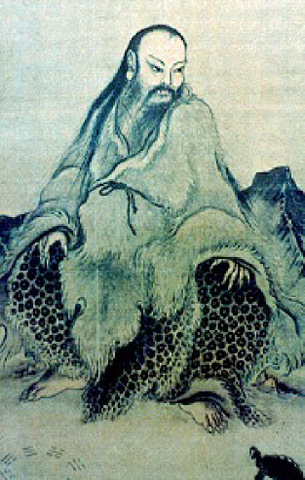 |
| The Greek god Dionysus
depicted on a Hellenistic mosaic in
Delos, Aegean Sea, Greece, 3rd c. BCE |
The legendary emperor
/ culture hero / creation god / flood
hero Fu Xi  in a 13th c. CE
depiction in a 13th c. CE
depiction
|
 |
 |
| pardivesture in Çatal
Hüyük, pre-pottery Neolithic, Anatolia,
Turkey |
pardivesture in
Tassili n'Ajjer, fertile Neolithic Sahara |
|
| |
|
| As a methodological and empirical exercise
towards his new book Towards
the Extended Pelasgian Hypothesis,
during this period Wim van Binsbergen finished an
extensive article 'Reconsidering
spiked wheel traps: An exercise in global
cultural distribution analysis', now
practically ready for publication. |
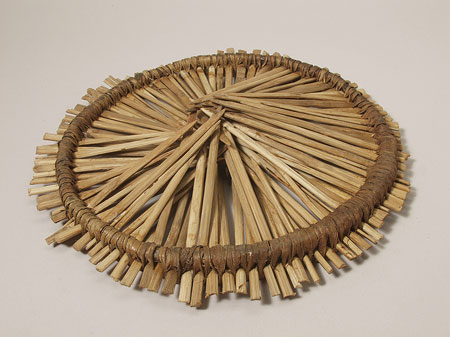 A spiked wheel trap from the
Acholi people, Southern Sudan (courtesy
Pitt-Rivers Museum, UK)
|
|
| May 2009 |
| CLICK
HERE for an extensively annotated photo essay of
this event (to return to the present page
from photographs: press the BACK button of your
browser)
|
|

Coyote, as 'divine trickster', is the protagonist
in many North American Flood stories, whose
structure often displays the logic of the
widespread transformative cycle of elements 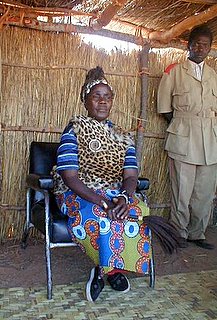
Mwene (Queen) Shakalongo, a clan chief of the
Nkoya people of Zambia recently reinstated after
nearly a century of being denied by the state,
here depicted at the Kazanga annual festival in
the early 2000s, Kaoma district, Zambia
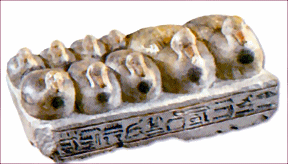
geese representing the Hermopolitan Ogdoad, and
Thoth, Ancient Egypt (courtesy http://www.egyptianmyths.net/images/ogdoad.jpg )
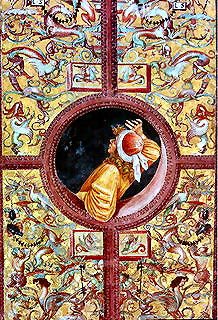
On a fresco in the Capella
Nuova, Orvieto, Italy (c. 1500), Empedocles leans
out of the void and inspects his four-divided
universe
|
Third
Annual Meeting of the International
Association for Comparative Mythology,
Tokyo, Japan, 23-24 May 2009
Hosted
by the International Association for
Comparative Mythology (IACM)
Co-hosted by the Intercollege Project for
Education about Religions and Cultures
(Grant-in-Aid for Scientific Research)
Sponsored by Harvard University,
Cambridge (Mass.), USA
Supported by the Institute for Japanese
Culture and Classics, Kokugakuin
University, Tokyo, Japan
Under the editorship of
Eric Venbrux and Wim van Binsbergen, the
convenors of the 2008 2nd Annual Meeting
of the International Association for
Comparative Mythology (Ravenstein, the
Netherlands, August 2008) work is in
progress on the publications of the
integral Proceedings, and of a
selective and high-profile book Studies
in Comparative Mythology.
Meanwhile, at the Third
Annual Meeting (this year in Tokyo) Wim
van Binsbergen, in his capacity as one of
the Directors of the International
Association for Comparative Mythology,
hopes to present the following paper:
van Binsbergen, Wim M.J., 2009,
'Izanami giving
birth to Kagutsuchi / Fire:
Evidence for a
widespread proto-historic cosmology
revolving on an elemental transformative
cycle, in Japan, Africa, through-out the
Old World, and in the New World – as
a step in the world-historic development
of modes of thought',
paper to be presented at the Third Annual
Meeting of the International Association
for Comparative Mythology, Tokyo, Japan,
23-24 May 2009:
click on the above link
for the full text of this paper (PDF)
ABSTRACT:
Point of departure will be
the myth of the primal goddess
Izanami giving birth to the Fire
God Kagutsuchi, and in the
process sustaining such burns
that she dies and becomes a, or
the, death goddess -- a
remarkable development, for at
this point she has already given
birth to islands, mountains,
rivers, trees, etc. without
noticeable difficulty. I will
outline six different registers
whose interplay governs the myth,
and of these I will only explore
one: that of a transformation
cycle of elements. Here, like in
Izanami's plight, destruction and
production are the two basic
relations. This
cosmological model surfaces, for
instance, in a late, streamlined
form in late 1st mill. BCE China:
as the yi jing cosmological
system of changes based on the 64
combinations of the eight
trigrams two taken at a time; and
the five-element cosmology of
Taoism in general -- but with
convincing parallels --
significantly differing in detail
-- in sub-Saharan Africa,
Ancient Egypt, India,
Ancient Greece -- Empedocles and
other Pre-Socratics -- and North
America). Fire, of course, is
among one of the basic elements
or positions, and so are water,
earth, air, often also metal and
wood. Without wishing to reduce
the complexity and literary
grandeur of the myth of Izanami
giving birth to Kagutsuchi / Fire
to just one of the varieties of
the transformative cycle of
elements, my detailed argument
explores what rich insights this
perpective yet may offer, both to
the study of Japanese mythology
(casting some -- hopefully --new
light, not only on Izanami and Kagutsuchi
/ Fire, but also on Izanagi, and
on the nature of their
narrative), and to
the historical study of human
modes of thought worldwide.
CLICK HERE FOR THE
JAPANESE ABSTRACT |
This trip will be financed by the Department
of Sanskrit and Indian Studies, Harvard
University, Cambridge Ma, USA
|
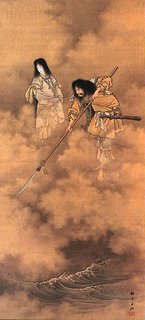
An Illustration of
Searching the Seas with the Tenkei (Tenkei
o motte sokai o saguru no zu).
Painting by Eitaku Kobayashi (Meiji
period). Izanagi to the right, Izanami to
the left. |
|
|
| April 2009 |
| Trip to Cameroon
(2-18 April 2009): During
the first three weeks of April, 2009, Wim van
Binsbergen hopes to be in Cameroon, in order to
supervise his various Ph.D students there in
intensive face-to-face sessions, and in order to
visit an International Colloquiumt:
| UNIVERSITE PROTESTANTE |
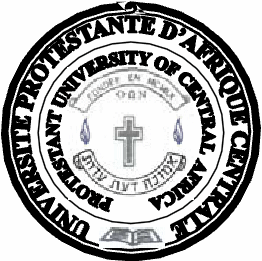 |
PROTESTANT UNIVERSITY |
| D’AFRIQUE CENTRALE (UPAC) |
OF CENTRAL AFRICA (PUCA) |
B.P.
4011 Yaoundé-Cameroun
Tél. : + (237) 22.21.26.90 Fax : + (237)
22.20.53.24
Site: http// www.upac-edu.org
E-mail : rectorat@upac-edu.org
Faculté des Sciences Sociales et des
Relations Internationale
International
Colloquium on The Problematic of Peace
and Development in Africa: Balance Sheet
and New Stakes in the 3rd
Millennium (convenor Jr. Prof. Célestin
Tagou), Faculty of Social Sciences and
International Relations, Protestant
University of Central Africa, Yaounde,
Republic of Cameroon, 6-9 April 2009
PLACE: YAOUNDE – CAMEROON (convenor:
Dr Celestin Tagou; click
here for the Conference's Call for Papers)
|
This International
Colloquium, splendidly organisated by the
convenor with the able assistance of Mrs
Constance Makia, marked the founding, at
Yaounde, Cameroon, of the African Institute for
Peace Communication and Development (AIPCD;
director: Jr. Prof. Celestin Tagou, of the UPAC
Faculty of Social Sciences and International
Relations), in close association with the radical
peace activist Johan Galtung and his organisation
Transcend International: A Network for Peace
and Development. Johan Galtung himself, still
going strong at 79, was the guest of honour
during the conference; he delivered an
interesting keynote address setting out his
well-known applied theory of peace-making, and
during the closing ceremony, after a passionate
and impressive further address, signed the
contract between te AIPCD and Transcend.
To this Colloquium (notably to Panel 1:
Historical and theoretical approaches to the
Problem of Peace and Development in General), Wim
van Binsbergen contributed a paper entitled:
van Binsbergen, Wim M.J., 2009,
'On the dynamics of conflict, reconciliation and
peace in African societies – from the local
to the national level, and beyond' .
This paper has now been
greatly revised for the proceedings of the
Colloquim, resulting in the following text:
Abstract. van Binsbergen, Wim M.J., in
press (2010), 'Africa’s splendid
social technology of reconciliation, and
the political sociology of its
under-utilisation at the national and
international level', in: Tagou, C., ed.,
The Problematic of Peace and
Development in Africa: Balance Sheet and
New Stakes in the 3rd
Millennium
[ provisional
title ]. (click for PDF) The
argument consists of two parts. In the
first part, I address the question as to
the nature of reconciliation –
reconciliation being a ‘social
technology’ i.e. a set of
established and viable strategies of
problem-solving, consisting however not
in the manipulation of the natural,
non-human aspects of the world but in the
articulation and transformative
management of human individuals and
groups. Such social technologies of
reconciliation i.e. of social and
political conflict resolution, I will
examine especially in the African
context, and I will conclude that, among
the societies of the world, African
societies have, since times immemorial,
particularly excelled in the social
technology of reconciliation as applied
at the local and regional level. This
leads on to the second part, in which I
contrast Africa’s excellent record
in local and regional reconciliation,
with the excessive rate of destructive
and genocidal conflict that has
characterised the African continent in
the past few decades. The argument’s
central question then becomes: How
can we explain that Africa’s social
technologies of reconciliation have
proven so utterly ineffective, and have
so little been applied, at the national
and the international level? After
highlighting the crisis of legitimacy of
modern and traditional elites as part of
the explanation, a fuller explanation is
derived from an examination of the
political sociology of modern Africa,
along such lines as the weak nature of
Africa’s formal organisations; the
pitfall of particularist divisiveness;
failing idioms of universalism; and the
dislocated and alienated African subject.
This leads us to consider Christianity
and ubuntu (‘the art of being
human’) in South African
reconciliation, and to recognise
transcendentalism and universalism as
harbingers of peace – but at a
considerable cultural cost for Africa.
Greater attention to the time-honoured
African social technology of
reconciliation may help to reduce that
cost.
the paper contains an extensive
bibliography. Its footnotes moreover
reflect recent developments in the
author's research on transcontinental
continuities, long-range cultural
comparison, Afrocentricity, the different
conception of history in Islam and
Christianity, and the econological causes
of Africa's failure to sustain viable
formal organisations including the state
(with detrimental consequences for peace
in the continent) |
Having earlier visited the Universities of
Yaounde I, and the Catholic University of Central
Africa at Yaounde, in previous years (click for
details: the years 2005 and 2006), I was pleasantly surprised when
making this first acquaintance with the
Protestant University of Central Africa (UPAC).
This institution had only very recently been
upgraded from a Theological College to a
University. The modest premises at the top of one
of the hills on which Yaounde was built, turned
out to contain a well-stocked library,
complemented by a well-trained and deeply
committed faculty staff of international
orientation, and a most enthousiastic student
population. The students keenly participated in
the Colloquium discussions and moreover were
active as choir singers, hostesses, and as
traditional dancers treating the delegates to an
evening of entertainment in which full justice
was done to time-honoured African musical
traditions. Contrary
to the suggestion I make in my paper, here Christianity as an idiom of
universalism and transcendence proved to be
rather compatible with a celebration of the
African historic heritage, even though the
latter's forms were inevitably streamlined and
globalised.
After the conference I was approached by the UPAC
Theological Faculty whether I would accept the
chair of Islamology on a part-time basis,
especially with a view of directing current and
new PhD projects on Islam-Christian relations,
for which Cameroon itself provides an interesting
field of study. The study of Islam is one of
my original fields of training and has remained a focus of my research
through the decades. Also I supervised relevant
research in Cameroon. Against the background of
my admiration for UPAC, I welcomed the offer as a
basis for further negotiation. Details are
currently being worked out.
To introduce myself to the prospective
undergraduate students, I already gave an
extensive lecture:
van Binsbergen, Wim M.J.,
2009, 'Introduction a l'Islam: Origines,
doctrines, pratiques, accommodations culturelles
et enjeux politiques en Afrique moderne' ,
lecture, Faculty of Theology, Catholic University
of Central Africa, 16 April 2009, 9.00-11.15 hrs
This trip was financed by the German
Cooperation for Development, via the EED
(Evangelische Entwicklungsdienst); the
Philosophical Faculty, Erasmus University
Rotterdam, the Netherlands; and the African
Studies Centre, Leiden. A further logistic
contribution was made by the Belgian FWO
(National Foundation for Scientific Research),
whose semi-annual meeting of the C4 (Theology and
Religious Sciences) section, at Brussels,
followed a few days after my return flight from
Cameroon.
|
 |
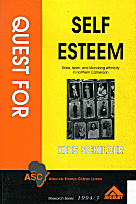 |
Supervising
the Cameroonian PhDs during an earlier
trip made in 2005. In the meantime their
respective projects have made much
progress, which was further enhanced by
the intensive and detailed supervision
sessions during the present trip.
|
The
thesis on ethnic passing and conversion
to Islam in the Maroua area, Northern
Cameroon, on which Kees Schilder took his
PhD at Leiden University, 1994, and which
was supervised by myself and Prof. Peter
Geschiere
|
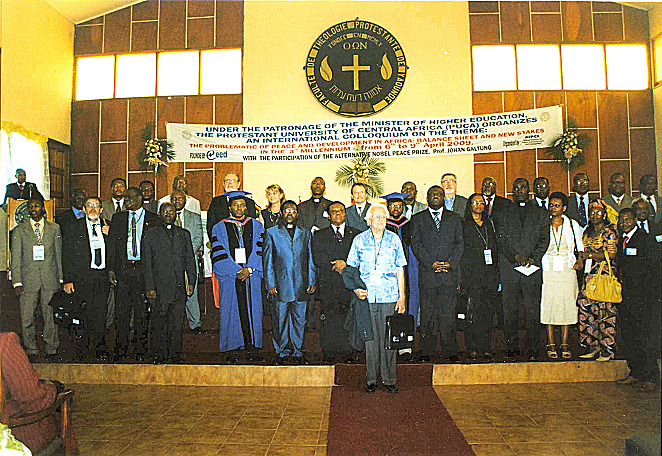
|
'Family
photo' of the conveners, delegates and
host of the International Colloquium on The
Problematic of Peace and Development in
Africa: Balance Sheet and New Stakes in
the 3rd Millennium (convenor
Jr. Prof. Célestin Tagou), Faculty of
Social Sciences and International
Relations, Protestant University of
Central Africa, Yaounde, Republic of
Cameroon, 6-9 April 2009; in the centre,
in light blue shirt, Johan Galtung
|
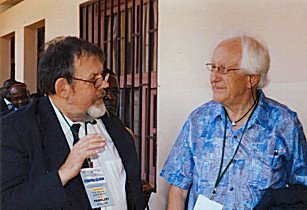 |
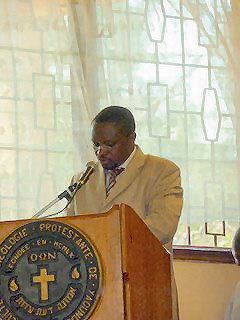 |
| Johan
Galtung in conversation with Wim van
Binsbergen at the 2009 Colloquium, UPAC,
Yaounde |
Jr. Prof.
Celestin Tagou, able and inspiring
convenor of the Colloquium, and Director
of the African Institute for Peace
Communication and Development (AIPCD). Dr
Tagou has a PhD from Hamburg, Germany,
and one of the pleasant surprises of this
Colloquium was the presence of his two Doktorvaeter,
his sometime supervisors, smugly
perceiving that their spiritual son was
doing fine, and adding their own
considerable prestige and expertise to
the meeting
|
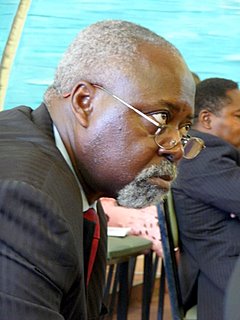 |
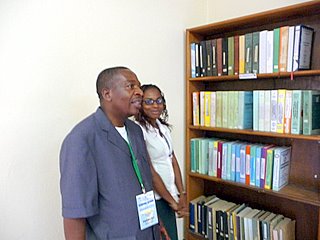 |
UPAC faculty member
Rev. Prof. Dr Marcel Oyono, historian and
theologian, holds two doctoral degrees
from Memphis, USA. I left UPAC with
copies of his two doctoral theses, hoping
to find a publisher for them in the North
Atlantic:
Oyono, Marcel Ngbwa, 2000,
'The contribution of the Fon cultural
tradition to the understanding of the
gospel in Cameroon, West Africa', Doctor
of Ministry thesis, Memphis Theological
Seminary, Memphis TN, USA.
Oyono, Marcel Ngbwa, 2004,
‘Colonization and Ethnic Rivalries
in Cameroon Since 1884’, PhD thesis
in history, The University of Memphis
Interested publishers are welcome to open
the above hyperlinks and inspect the
copy; for further details please contact me by e-mail
|
UPAC PhD and
colloquium panelist Rev.Prof.Dr.
Abekyamwale Ebuela Abi with a librarian
at the UPAC library. Also this
colleague's PhD thesis was entrusted to
me in order to find a publisher:
Abekyamwale Ebuela Abi, 2007,
'La theologie de la reconciliation dans
le contexte congolais d'apres-guerre :
Une contribution pour la construction de
la paix et le developpement', thèse de
doctorat en théologie, Université
Protestante de l' Afrique Centrale,
Yaounde, Cameroun.
Interested publishers are
welcome to open the above hyperlink and
inspect the copy; for further details please contact me by e-mail
|
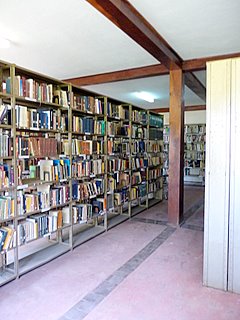 |
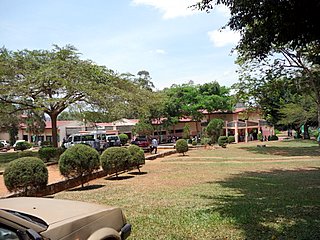 |
The UPAC Library
|
The UPAC campus
|
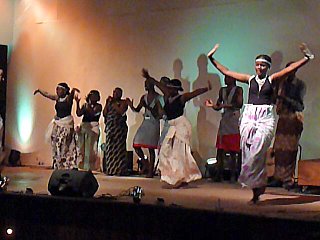 |
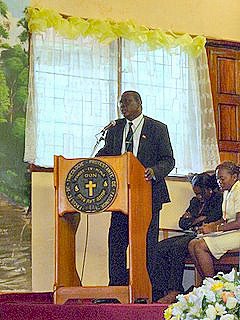 |
UPAC students
entertain Colloquium delegates with a
splendid evening of tradional dances from
all over Africa
|
Prof. Fabius
Okumu-Aiya from Gulu University, Uganda,
delivers his paper on the peace process
in his part of Africa
|
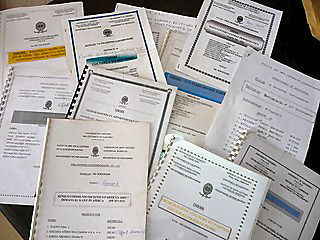 |
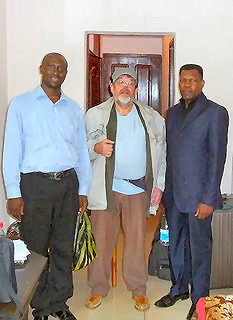 |
For the
past two years, one of my PhD students in
Cameroon, Mr. Pascal Touoyem, has
lectured on my version of Intercultural
Philosophy at the University Yaounde I,
where I had lectured myself in 2005 and
2006. During the present visit I was
proudly presented with an avalanche of
high-quality student work on various
aspects of my recent research and of my
'magnum opus' Intercultural Encounters (2003)
|
The
Cameroonian PhDs in 2009 |
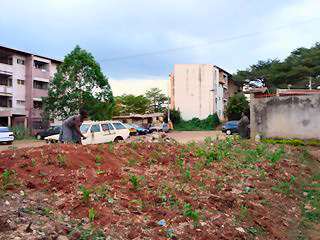 |
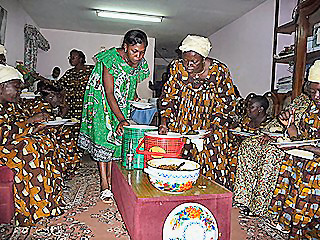 |
Mendong,
here showing its patches of horticulture
between the pleasant apartment buildings
inhabited by civil servants, is where
another of my PhD students lives, Mr Pius
Mosima. His apartment had the honour of
accommodating, on the eve of Easter 2009,
the Bakwerri Cultural Association (from
the Buea area, West Cameroon) on an
annual traditional memorial rite for the
recently deceased. As a student of
African ritual of many years standing, I
was privileged to be able to attend this
meaningful rite combining respect for the
dead with the vibrations and the
sustenance of life
|
Uniformed
members of the Bakwerri Cultural
Association's Executive dish out the food
that is an indispensible part of the
memorial rite |
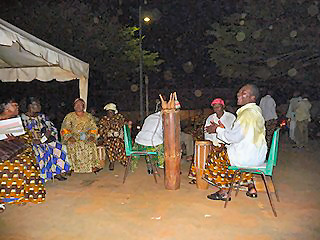 |
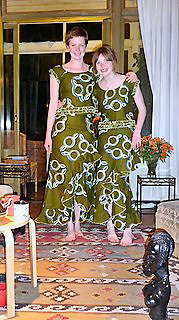 |
While the Executive
mainly occupies the drawing room inside
the apartment building, a few dozen other
members have convened in the public open
space in front of the building, where a
party tent is erected, food is being
served, and drumming, singing and
occasional dancing pays hommage to the
recently deceased
|
closing the circle:
dressed in Cameroonian ensembles made to
measure after the UPAC student's hostess
uniforms, my two youngest daughters
highlight the complementarity between
continents
|
|
|
| January-March 2009 |
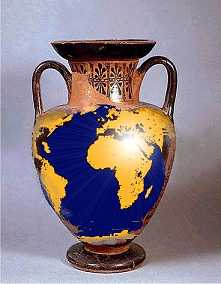 This
ironically anachronistic image of a Greek
vase (displaying modern geographical
knowledge and representation), with a
sunburst highlight on Egypt and the
Ancient Near East, appears as the emblem
of Wim van Binsbergen's webpage on Black
Athena and Afrocentricity This
ironically anachronistic image of a Greek
vase (displaying modern geographical
knowledge and representation), with a
sunburst highlight on Egypt and the
Ancient Near East, appears as the emblem
of Wim van Binsbergen's webpage on Black
Athena and Afrocentricity 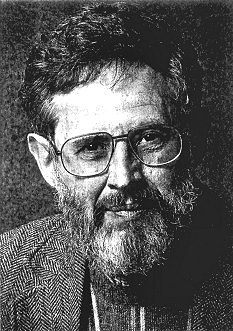 Martin Bernal (*1937), Cambridge
(UK) trained Sinologist / historian of
ideas, Professor of Politics and since
the late 1980s also Associate Professor
of NearEastern Studies, Cornell
University, USA; and visionary initator
of the Black Athena debate Martin Bernal (*1937), Cambridge
(UK) trained Sinologist / historian of
ideas, Professor of Politics and since
the late 1980s also Associate Professor
of NearEastern Studies, Cornell
University, USA; and visionary initator
of the Black Athena debate
|
Further
work on the Black Athena debate 1987
the Sinologist and historian of ideas
Martin Bernal published the splendid
first volume of his Black Athena
series, in which he seeks to identify
'the Afroasiatic roots' of classical
Greek civilisation and hence of European
and North Atlantic civilisation --
criticising the 'fabrication', in the
18th and 19th c. CE, of Ancient Greece as
a completely original, incomparably rich
culture without historical antecedents or
indebtedness to other cultures especially
those of the Ancient Near East including
Egypt. An intense world-wide debate
followed, to which Wim van Binsbergen has
made several contributions since 1996 (see his
specific webpage devoted to Black Athena
and Afrocentricity), including an
acclaimed collection Black Athena Ten
Years After, now to be reprinted by
LIT Verlag (Berlin / Boston / Munster) in
much updated and augmented form as Black
Athena Twenty Years After. That the Black
Athena debate is still alive and
kicking, is demonstrated by the major
international conference on the topic in
Warwick (U.K.) early November 2008, in
which prominent scholars participated in
a bid to assess the lasting significance
of Bernal's view, if any. Meanwhile Wim
van Binsbergen's constructively critical
reflection on Bernal's work has
continued. A recent and up-to-date
product is the following article now
submitted for publication:
The continued relevance of
Martin Bernal’s Black Athena thesis:
Yes and No
(33 pp., with one table
and two figures, and extensive
bibliographic references)
| ABSTRACT. This
paper situates Martin
Bernal’s work in context and
largely defends it against the
sweeping criticism and
allegations brought against it
(notably in Lefkowitz and MacLean
Rogers’ 1996 collection Black
Athena revisited; and in
Berlinerblau’s Heresy in
the University, for whom
Bernal is 'the academic Elvis' --
i.e. the appropriating White
recycling Black ideas). Even so,
serious criticism cannot be
avoided, notably of Bernal's lack
of method; his politicised view
of historical and academic truth;
his tendency to conflate culture,
language and somatic type; his
obsession with origins; his
literalist approach to myth; his
inability to make living
socio-cultural history out of
reconstructions of provenance;
and his dogged insistence on an
unconvincing, for non-systematic,
Ancient Egyptian etymology of the
Greek theonym Athena. Without
downright destroying the Black
Athena thesis, these various
defects could be remedied by the
concerted, interdisciplinary
collaboration of specialists, to
which the argument exhorts the
international scholarly
community. However, towards the
end the argument cannot refrain
from more fundamental criticism,
chiding Bernal for myopic
concentration on the Eastern
Mediterranean. Here the argument
goes beyond the Black Athena
thesis in the light of
state-of-the-art comparative and
historical linguistics, and
molecular genetics, which have
made possible a truly long-range
approach to global cultural
history. In passing, we highlight
the peculiar Bronze Age
Mediterranean presence of
Niger-Congo / Bantu linguistic
elements (usually associated with
sub-Saharan Africa). Relying on
the recently discovered
‘Back-into-Africa’
migration from Central and West
Asia from the Upper Palaeolithic
times onward, and on recent
reconstructions of the Upper
Palaeolithic *Borean parent
language, the present argument
offers a powerful alternative for
the Black Athena thesis: The
Aegean region looks similar to
Ancient Egypt, not primarily
because of diffusion from Egypt
in the Late Bronze Age, but
because both were the recipients
of a demic, linguistic and
cultural movement from West
(ultimately Central) Asia; and
this movement also extended to
sub-Saharan Africa, producing the
same similarities there. Ancient
Egypt displays many cultural and
religious similarities with
sub-Saharan Africa, not primarily
because of diffusion from
sub-Saharan Africa to Egypt in
Neolithic times, but the other
way around: because the
Back-into-Africa movement,
carrying a significant share of
Asian genes, as well as cultural,
religious and linguistic elements
(including *Borean-associated
elements towards Niger-Congo /
Bantu) passed via Egypt on its
way from Asia to sub-Saharan
Africa. However, while thus
the argument has rather
devastating implications for
Afrocentrism including the
Bernallian variant, it could not
have been made without Bernal's
visionary and path-breaking
contribution. |
|
|
   |
| In this period Wim van Binsbergen
works on the editing of a number of book
manuscript hoped to go to the press in 2009   
|
| Article
on myth, philosophy, poetics, and long-range
research in Religion
Compass In
a special issue devoted to the theme of 'Myth and
the Disciplines' (eds. Mineke Schipper &
Daniela Merolla), the journal Religion
Compass finally brought out, on the basis of
the Leiden 2003 conference of the same name:
van
Binsbergen, Wim M.J., 2009, 'Rupture and Fusion
in the Approach to Myth: Situating Myth Analysis
Between Philosophy, Poetics and Long-Range
Historical Reconstruction', Religion Compass,
3 (2009): 1-34 (click for full-text PDF)
| ABSTRACT: On the basis of my
engagement with myth over the decades,
the present paper seeks to present some
‘prolegomena’ to the study of
myth today. It does so, in the first
place, by a short overview of
philosophical contributions and
implications of the study of myth. After
formulating and discussing a possible
definition of myth, the argument focuses
on two complementary perspectives in the
scholarly approach to myth: the
objectifying perspective of rupture
versus the participatory and identifying
perspective of fusion. After indicating
the pros and cons of both, and giving an
example (notably, the ‘hero fights
monster’ mytheme) of extensive
continuity in myth through space and
time, the paper concludes with a summary
of the main results of the author’s
current long-range comparative research
into leopard and leopard-skin symbolism,
which is informed by loosely interlocking
mythical complexes extending all across
the Old World and part of the New World,
over a time span from the Upper
Palaeolithic to the present. |
|
Illustration:
Apollo kills Python. Engraving by Virgil Solis
for Ovid's Metamorphoses Book I, 435-451.
Fol. 9r, image 12, 1581; One of the perennial
themes of global mythology is the 'combat myth',
and its permutations and variations in several
continents and periods (as studied by Fontenrose,
Python, 1980, 2nd ed.) are used in the
paper's argument to demonstrate the continuity
and interconnectivity of myths in space and time
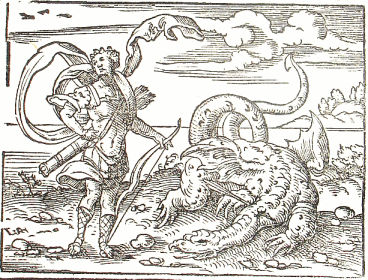
|
|
| current year: 2009 (begins above this line; the closer to
the top of the page, the nearer to 2009) |
| October-December
2008 |
|
|
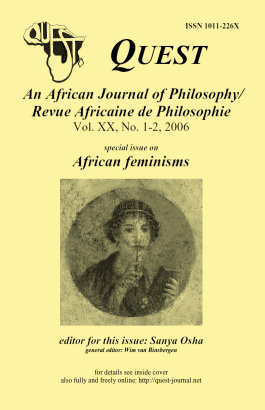 |
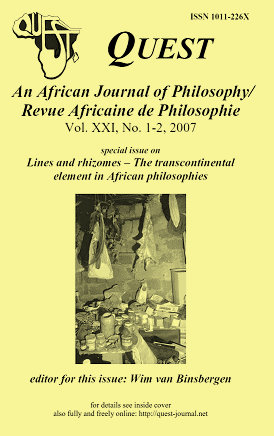 |
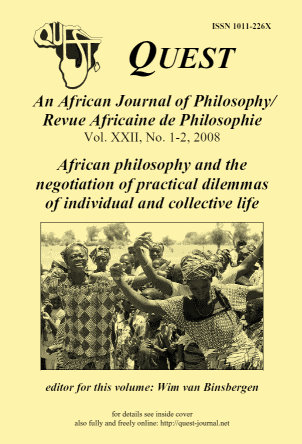 |
| Sanya Osha (with the assistance of Wim
van Binsbergen) edited a timely and fascinating
special issue on African
feminisms (vol.
XX – 2006, 205 pp.) with a team of
contributors consisting of some of the most
prominent African women intellectuals, and the
Nigerian philosopher Eze. |
Wim van Binsbergen edited a special
issue on Lines
and rhizomes: The transcontinental element in
African philosophies (vol. XXI -- 2007, 331 pp.). to this volume, Wim van Binsbergen has
contributed the following two articles:
van Binsbergen, Wim M.J., 2008,
‘The eclectic scientism of Félix Guattari:
Africanist anthropology as both critic and
potential beneficiary of his thought’, in:
Quest: An African Journal of Philosophy/ Revue
Africaine de Philosophie, Vol. XXI, No. 1-2,
2007, special issue on: Lines and rhizomes
– The transcontinental element in African
philosophies, pp. 155-228 (click for PDF which also includes an
abstract)
van Binsbergen, Wim M.J., 2008,
‘Lines and rhizomes: The transcontinental
element in African philosophies: Introduction',
in: Quest: An African Journal of Philosophy/
Revue Africaine de Philosophie, Vol. XXI, No.
1-2, 2007, special issue on: Lines and
rhizomes – The transcontinental element in
African philosophies, pp. 7-22 (click for PDF
which also includes an abstract)
|
Wim van Binsbergen edited a general
volume under the title African
philosophy and the negotiation of practical
dilemmas of individual and collective life (XXII -- 2008, 260 pp.) to this volume, Wim van Binsbergen has
contributed the following article:
van Binsbergen, Wim M.J., 2008,
‘Traditional wisdom – Its expressions
and representations in Africa and beyond:
Exploring intercultural epistemology’, in:
Quest: An African Journal of Philosophy/ Revue
Africaine de Philosophie, Vol. XXI, No. 1-2,
2007, issue on: African philosophy and the
negotiation of practical dilemmas of individual
and collective life, pp. 49-120 (click for
PDF which also includes an abstract)
as well as the
editorial:
van Binsbergen, Wim M.J., 2008,
'Editorial: African philosophy and the
negotiation of practical dilemmas of individual
and collective life', Quest: African Journal of
Philosophy / Revue Africaine de Philosophie, 22,
1-2, pp. 2-4.
|
As Editor in Chief of Quest, Wim
van Binsbergen wishes to thank all of Quest's
authors, readers and subscription agents for
their patience and continued support of Quest.
We look forward to your submissions of
papers for publication, and your subscriptions if
you prefer the hard copies of our journal (full
web access of all twenty-two annual volumes
published continues to be free, world-wide); full
sets of back copies are available in limited
number. A new volume XXIII – 2009 is
already on its way but it can
use a few more contributions. Volume XXIII
will be the last volume that is to have some
limited institutional support from the African Studies
Centre, Leiden, The Netherlands. The obvious
next step is to find a permanent home for Quest
in Africa; the present, then outgoing, Editor
will welcome any viable suggestions on this
point.
Please note that Quest is now best
approached by
e-mail via the Editor’s mail address
(click). |
| |
| New book
drafted: Black
Vulcan? Exploring African, Egyptian and
global connections of Hephaistos Having
accumulated a large number of outstanding
vacation days which could not be taken on
to the next year, Wim van Binsbergen was
able to have a sabbatical from
mid-October to end of December, 2008. In
this period he worked on outstanding
publications, published three annual
volumes of Quest: An African Journal of
Philosophy / Revue Africaine de
Philosophie, and wrote a book-length
draft of a new proto-historical study
provisionally entitled Black Vulcan?
Exploring African, Egyptian and global
connections of Hephaistos, whose
inspiration came, distantly but
unmistakably, from Bernal's Black
Athena trilogy (1987-2006), but more
directly from Václav Blažek's paper
for the 2008 Ravenstein conference (see
below, August 2008; Blažek's
paper may be consulted at the Ravenstein
conference website).
|
|
|
| |
Published:
Wim van Binsbergen's CODESRIA article on
existential dilemmas in a Northerner's
(René Devisch's) production of relevant
Africanist knowledge
 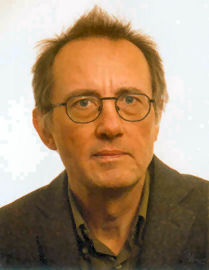
|
In April 2007 the University of
Kinshasa, Democratic Republic of Congo,
granted an honorary doctorate to the
prominent Belgian anthropologist
Professor René Devisch (one of that
University's alumni) for his immense
contributions to Congo studies (also see
Devisch's personal website at: https://perswww.kuleuven.be/~u0012668/ ). For the CODESRIA
Bulletin this was reason to organise
(in the time-honoured manner of the
leading anthropological journal Current
Anthropology) a multivocal critical
discussion of René Devisch's extensive
and wide-ranging speech of thanks; the
contributors to this discussion include
Mudimbe, Keita, Depelchin, etc. The
collection came from the press in
November 2008, and is about to be
uploaded onto the CODESRIA website. Wim
van Binsbergen's contribution to this
collection deals with the dilemmas of
vicariousness, performativity, identity
loss and personal myth in the
transcontinental construction of
Africanist knowledge:
Wim van Binsbergen, 2008,
‘Existential dilemmas of a North
Atlantic anthropologist in the
production of relevant Africanist
knowledge', CODESRIA Bulletin,
2008, pp. 15-20 (click for PDF).
the same argument was also
published in French as:
van Binsbergen, Wim M.J.,
2008, ‘Dilemmes existentiels
d’un anthropologue du nord de
l’Atlantique dans la production
de connaissances africanistes
appropriées’, Bulletin du
CODESRIA, 2008, 1-2, pp. 15-20
In order to limit the paper to
manageable length, the CODESRIA
Bulletin Editors proposed to omit
the extensive bibliographical and
critical apparatus but to include a link
to the present webpage, on which the
original, full article can be found:
http://www.shikanda.net/devisch.htm
(click here for full version). ;
regrettably, time has not yet allowed to
prepare a similarly full, French version
|
|
|
| September 2008 |
 |
Expert
meeting on Kosovo: Ethnicity and national
independence 18 september
2008: Wim van Binsbergen participeert, samen met
enige politicologen, historici, journalisten,
vertegenwoordigers van NGOs, een kunstenaar, en
directeur en medewerkers van De Balie: Centrum
voor Politiek en Cultuur, in de besloten
expert-meeting KOSOVO DOMINO die De Balie te
Amsterdam, in samenwerking met Oxfam / NOVIB,
houdt ter voorbereiding en toetsing van een
geplande reeks bijeenkomsten over de nabije
toekomst van grenzen, onafhankelijkheid, en
identiteit, niet alleen in de Balkan, maar over
de hele wereld, inclusief Afrika
|
 |
| |
|
|
 |
Quest
website restored The
website of Quest: An
African Journal of Philosophy / Revue Africaine
de Philosophie, which
regrettably was inaccessible for some time, has
now been restored at the familiar URL http://www.quest-journal.net
.
|
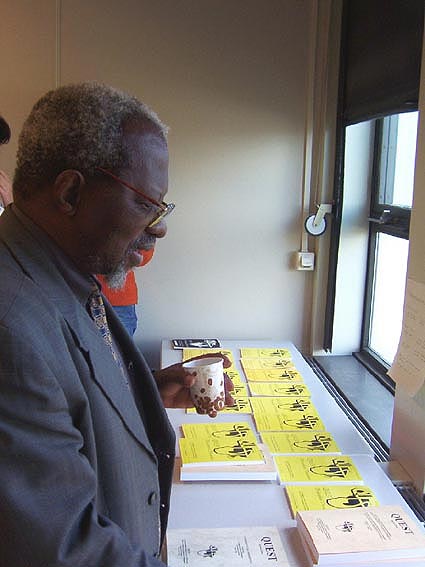
| Prof.
Hountondji from Benin,
prominent African
philosopher and member of
the Quest
advisory board, inspects
back copies of Quest
at the journal's
relaunching, Leiden,
Netherlands, April 2004 |
|
|
|
|
| August 2008 |
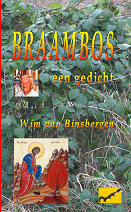 |
Publication
of Braambos,
a book of poetry, on the occasion of
Matthew Schoffeleers' 80th birthday DICHTBUNDEL:
BRAAMBOS. Op 31 augustus 2008
vierden vrienden en oud-collega's de 80e
verjaardag van Matthieu Schoffeleers,
priester en oud-missionaris te Malawi,
gedurende vele jaren hoogleraar
religieuze antropologie aan de Vrije
Universiteit te Amsterdam en aan de
Universiteit Utrecht, en jarenlang de
stuwende kracht achter de cultus van de
martelaar en vegetatiegod Mbona, wiens
heiligdom zich bevindt in de Beneden
Shire vallei te Malawi. Het
wetenschappelijk en persoonlijk leven van
Schoffeleers is op vele wijzen verweven
met dat van Wim van Binsbergen: sinds
1973 als vriend en als collega-pionier in
de ontwikkeling van een long-range
proto-historische benadering van de
religie van Zuidelijk Centraal Afrika,
als academisch promotor in 1979, als
celebrant bij het huwelijk van Wim van
Binsbergen en Patricia Saegerman 1984,
als mede-redacteur van Wim van Binsbergen
& Matthew Schoffeleers, eds., 1985, Theoretical
explorations in African religion,
Londen / Boston, Kegan Paul
International, etc. Het lag dan ook voor
de hand dat Wim van Binsbergen in 1998,
bij het afscheid van Schoffeleers van de
Universiteit van Utrecht, de voornaamste
spreker was, met een uitvoerig vertoog
waarin uitgaande van het werk van
Schoffeleers en met een parallel met van
Binsbergens optreden als Zuidelijk
Afrikaans geestesmedium, de grenzen van
integriteit in antropologisch veldwerk
werden verkend, opgenomen in de door
Michael Elias en Ria Reis geredigeerde
feestbundel Getuigen ondanks zichzelf,
en later in het Engels opgenomen in Wim
van Binsbergens boek Intercultural
encounters (Berlin etc.: LIT, 2003).
Voor Schoffeleers' tachtigste verjaardag
liet Wim van Binsbergen een nieuwe
dichtbundel het licht zien:
Braambos: Een gedicht,
waarvan de integrale
tekst en de omslag
met flaptekst hier beschikbaar worden
gemaakt (PDF).
|
 |
|
| |
|
| Intensive
PhD supervision In
the context of the Ravenstein 2008
conference (see below), one of Wim van
Binsbergen's PhD students, Stephanus
Djunatan came to the Netherlands for
highly intensive supervision. In the
process, the West Java specialist,
anthropologist Dr Robert Wessing, was
found prepared to join the supervisory
team, which moreover comprises Prof.Dr
Ignatius Bambang Sugiharto, Head of
Philosophy, UNPAR University, Bandung,
Indonesia, in addition to the
intercultural philosopher Wim van
Binsbergen. The thesis is to be defended
before the Erasmus University Rotterdam,
end of 2010.
photograph right:
Bandung philosophy lecturer and Erasmus
University Rotterdam MA alumnus Stephanus
Djunatan (left) and Leiden Drs/MA the
photographer Henri Ismael (middle),
during fieldwork in the house of the
senior shrine warden Pa Undang (right),
dessa Rawabogo, Ciwidey, Bandung region,
Indonesia, July 2007; click
here for details
Mr Djunatan's trip was sponsored by
the Philosophical Faculty, Erasmus
University Rotterdam
|
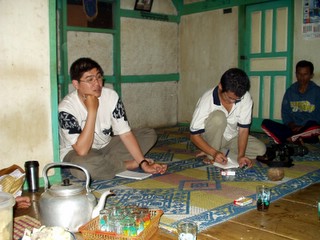 |
|
| |
|
| International
Association for Comparative Mythology: Second
Annual Conference; convenors: Eric Venbrux and
Wim van Binsbergen |
 
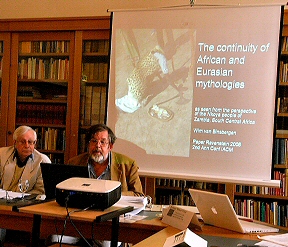 |
| Wim van Binsbergen
presents his paper on 'The continuities
of African and Eurasian mythologies'; in
the chair Prof. Boris Oguibénine from
Strassburg, France |
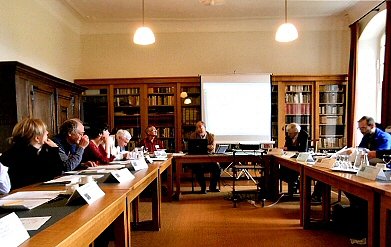 |
| Prof. Matsumura from
Tokyo, Japan, presents his paper on the
relevance of Japanese mythology for Old
World mythology in general |
|
place: Ravenstein (near
Nijmegen, the Netherlands) dates: 19-21 August 2008
for full details including the
programme, abstracts, a full sets of papers,
discussions, and list of international sponsors
(foremost: Harvard University, the Royal
Netherlands Academy of Sciences, Radboud
University Nijmegen, the African Studies Centre
Leiden, the Philosophical Faculty Erasmus
University Rotterdam, and Quest: An African
Journal of Philosophy), click here to open
the special conference website at http://www.iacm.bravehost.com
for a brief conference report, click
here (van Binsbergen, Wim
M.J., 2008, ‘Conference of the International
association for Comparative Mythology: 19-21
Augustus 2008, Ravenstein’, Habari
[Communication Bulletin, African Studies Centre,
Leiden], 22: 19-20) (PDF)
to this conference the site
owner contributed the very rough draft (not
for publication nor published comment!) of
an extensive paper:
Wim van Binsbergen, 2008, 'The
continuity of African and Eurasian mythologies:
As seen from the perspective of the Nkoya people
of Zambia, South Central Africa' (click for PDF)
| ABSTRACT. Against the
background of topical developments ion
comparative mythology (especially the
work of Michael Witzel), and
concentrating on the mythology of the
Nkoya people of Zambia (South Central
Africa) my argument extensively offers
the descriptive data on which to base a
formal consideration of Nkoya
–Eurasian parallels, gradually
proceeding to a point where such formal
consid-eration could begin to give way to
the admission of factual historical
continuity. Thus I argue that there is an
empirically justified case for such
continuity between African and Eurasian
mythologies, as a way to open up new
theoretical, historical and
interpretative horizons. In the process,
a number of possible explanatory models
of such continuity are considered and
evaluated both empirically and
theoretically: Frobenius’ (1931)
model of the South Erythraean culture
extending from the Persian Gulf and the
Red Sea to East Africa and South West
Asia; cultural diffusion from Egypt (the
Egyptocentric argument); combined
cultural and demic diffusion from
sub-Saharan Africa shaping Egyptian and
subsequently Greek mythology (the
Afrocentrist position, and Bernal’s
Afrocentrist afterthought after his
Egypto-centrist Black Athena position);
van Binsbergen’s Aggregative
Diachronic Model of World Mythology,
claiming that ‘Pandora’s
Box’ (my proposed term for the
cultural heritage with which Anatomically
Modern Humans left Africa in two sallies,
80 and 60 ka BP) contained a few basic
mythological themes that were
subsequently developed, transformed and
innovation in Asia after which the
results where fed back into Africa in the
context of the recently discovered
Back-into-Africa movement from 15 ka BP;
and Oppenheimer’s General Sunda
Thesis, claiming a general fertilising
effect (implied to have been Austric /
Austronesian based) of pre-insular South
East Asia upon West Asia, the Eastern
Mediterranean, and Africa. |
Part of this paper's argument
specifically addresses parallels between the core
image, among the Zambian Nkoya, of kings
as the 'Tears of Rain' (cf.
Wim van Binsbergen, 1992, Tears
of Rain: Ethnicity and history in Central Western
Zambia, London/Boston: Kegan Paul
International), and the
Ancient Egyptian conception of humankind
as springing from the tears of Rëc.
This section is now being greatly reworked for
publication in an Egyptological context.
towards this conference, funds
have been made available by: Department of
Sanskrit and Indian Studies, Harvard University,
Cambridge MA, USA; the Royal Netherlands Academy
of Sciences; the Faculty of Religious Studies,
Radboud University Nijmegen, the Netherlands; the
African Studies Centre, Leiden University, the
Netherlands; the Philosophical Faculty, Erasmus
University Rotterdam, the Netherlands; Quest:
An African Journal of Philosophy / Revue
Africaine de Philosophie; the Research School
NISCO, Faculty of Social Sciences, Radboud
Universiteit Nijmegen, the Netherlands.
|
|
| June-July 2008 |
   The virtualisation of First
Peoples art in Western Canada today
|
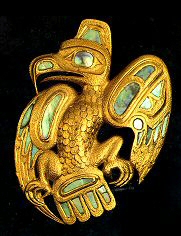 Gold and
abalone-shell broche by Bill Reid, a radio
announcer who gradually became aware of his First
Nations background, became a goldsmith, then a
monumental sculptor, and ended as the celebrated
figurehead of the revival, virtualisation and
official appropriation of Haida culture

Typical landscape in the Rocky
Mountains

The demiurge, divine trickster
and culture hero Raven is one of the most
prominent figures in Northwest Coast mythology
and iconography... (Raven representation from the
Britsh Columbia Museum, Victory)
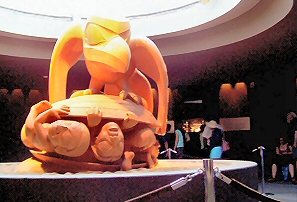
Yet the standard Canadian icon
of Raven has become, inevitably, Bill Reid's
monumental 'Raven meets the first humans'
(commissioned by, and now on display at, the
Museum of Anthropology, University of British
Columbia, Vancouver)
|
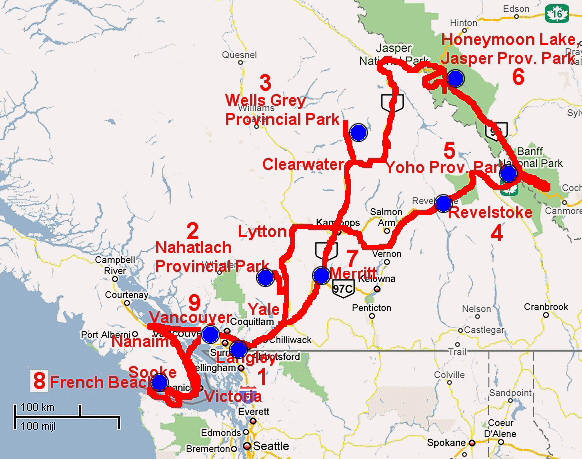 While the preparation
for the 2nd Annual Conference of the
International Association for Comparative
Mythology continued at full throttle, Wim van
Binsbergen took the opportunity to travel, with
his wife and two youngest children, to a part of
the world on which his research had touched more
and more in the last few years: the coastal
areas, the interior Plateau, and the Rocky
Mountains of British Columbia, Canada. This
region is home of some of the most exciting flood
stories in the world, featuring such whimsical
divine tricksters / culture heroes as Coyote and
Raven, whose earthly counterparts may be
encountered at every wilderness campsite. It is
moreover the destination of suspected
trans-Pacific Sunda influence in the cultures of
Haida, Kwakiutl etc. Finally, both culturally and
mythologically North America is a part of the
world that (in such details as divination
systems, games, female puberty rites, myths) has
remarkable affinities with sub-Saharan Africa,
which Wim van Binsbergen's recent long-range
research into comparative mythology tends to
explain on the basis of a common partial basis in
West to Central Asia, whence the newly discovered
'Back-into-Africa' movement brought genes and
cultural patterns into Africa, while much more
recognised movements reached from Central Asia
across the Bering Street as major contirbutions
to the peopling of the Americas. Like an earlier
trip to Navaho Nation (1979), but now based on
somewhat greater knowledge of the extensive
anthropological and linguistic literature, the
exploration of 4,000 kms of British Columbia and
adjacent Alberta within a few weeks -- with an
increasing focus on Native American, or as the
euphemistic expression is in Canada, 'First
Nations', art, from curio shops to Bill Reid --
particularly highlighted extensive parallels
between First Nations' conditions today, and the
plight of peasants and proletarians in colonial
and post-colonial Africa. In this self-sponsored
project, data were collected that are ultimately
to lead to an exploratory article on the
virtualisation of Native American art and
identity in Canado today -- as a specific, and
surprisingly illuminating, application of Wim van
Binsbergen's earlier work virtuality and
globalisation in the contemporary African
context. Cf.:
van Binsbergen, W.M.J., 1997, Virtuality
as a key concept in the study of globalisation:
Aspects of the symbolic transformation of
contemporary Africa, The Hague: WOTRO [
Netherlands Foundation for Tropical Research, a
division of the Netherlands Research Foundation
NWO ] , Working papers on Globalisation and the
construction of communal identity, 3;
van Binsbergen, W.M.J., 2001b,
'Witchcraft in modern Africa as virtualised
boundary conditions of the kinship order', in:
Bond, G.C., & Ciekawy, D.M., eds., Witchcraft
dialogues: Anthropological and philosophical
exchanges, Athens (OH): Ohio University
Press, pp. 212-263
van Binsbergen, W.M.J., 1998,
'Globalization and virtuality: Analytical
problems posed by the contemporary transformation
of African societies', in: Meyer, B., &
Geschiere, P., eds., Globalization and
identity: Dialectics of flow and closure,
Oxford: Blackwell, pp.273-303.
|
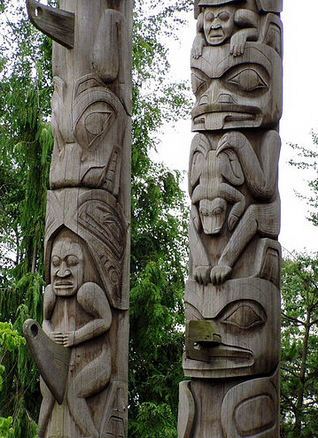 Most
totem poles now on display in Canada are only a
few decades old, and while conveying
time-honoured mythical themes, primarily serve to
publicly dissimulate the uneasy relationship
between Native Americans and the Canadian
government
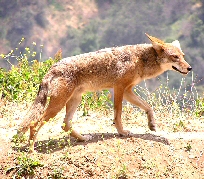
Canis lactrans, the
Coyote, another culture and flood hero of North
American cultures
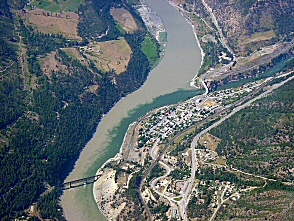
Aerial photograph of the little
town of Lytton, at the confluence of the Fraser
and the Thompson Rivers. Right at the centre of
the Plateau's abundant salmon fishing grounds,
Lytton was a centre of salmon processing and
trading centre even in pre-conquest times. Still
its population is predominantly First Nations
(Nlaka'pamux, Interior Salish). The 'Reserve''s
territory and headquarters are located in the
northwestern outskits of Lytton, where the First
Nation operated curio shop provides a depressing
but revealing glimps of cultural protest and
revival

The Thompson River near
Kamloops
|
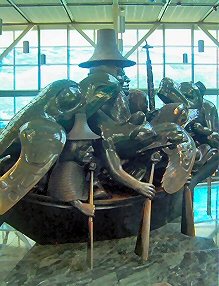 |
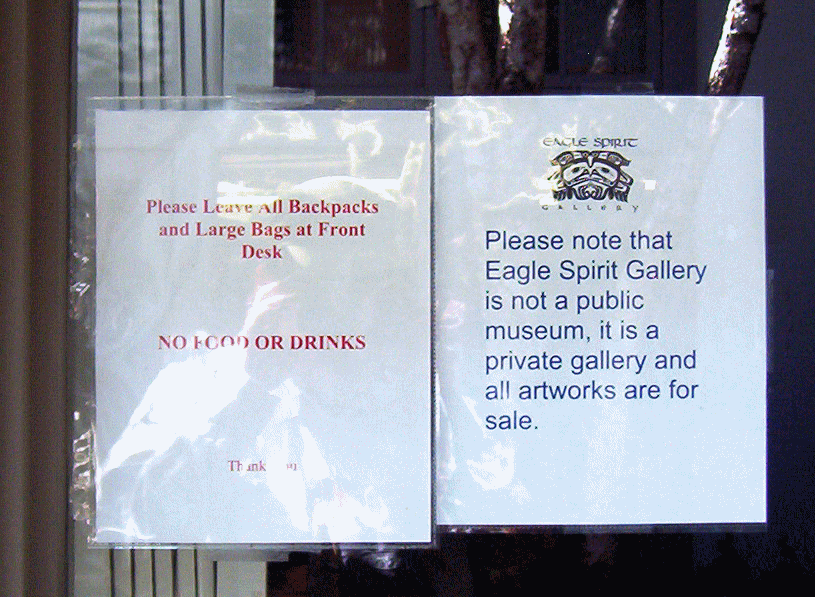
|
 |
| prominently displayed in a
shrine-like central spot at Vancouver
International Airport (another cast embellishes
the Canadian Embassy in the USA), Bill Reid's
monumental sculpture The Spirit of Haida
Gwaii ('Haida Country') has become an icon
of the public production and appropriation of
First Nation Art |
Eagle Spirit, an
art gallery situated at the trendy Granville
Island near the place in Vancouver where Bill
Reid had his workshop, eloquently testifies to
the commodification and virtualisation of First
Nation art |
The Spirit of
Haida Gwaii, here on Canada's $20 bill |
|
| May 2008 |
Conclusive
developments in Wim van Binsbergen's divination
studies since 1988
|
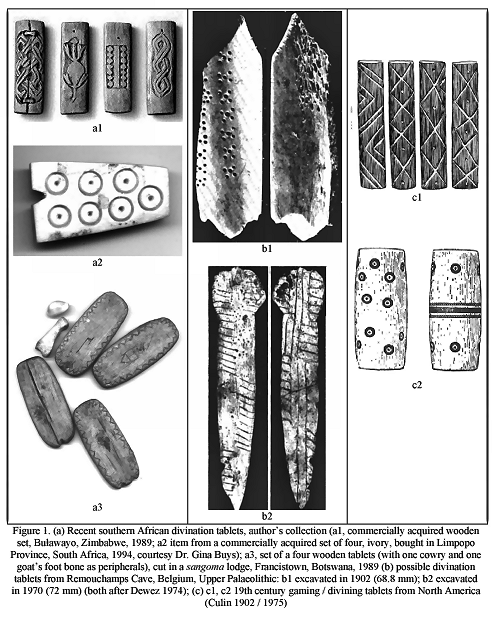 |
In July 2005, Wim van Binsbergen had been
honoured (next to the Mozambican
ethnomathemathician Gerdes) to pronounce the
keynote address at the Leiden international
conference on divination (click
here for details on the 2004-2005 Topicalities
page). Meanwhile two of the convenors, Walter
van Beek and Phil Peek, have planned a collective
volume based on the conference. On the basis of
his comparative and historical long-range
research since 1990, in the Spring of 2008 Wim
van Binsbergen worked his keynote into an
extensive and complex statement on 'Divination in
space and time', a selection of which is agreed
to be included in the van Beek / Peek volume (the
typological and philosophical parts), while the
central, long-range historical part on 'The
prehistory of African divination' will be
published separately. Click on the following link
for the entire draft article (PDF; draft: not for
publication or published comment):
Wim van Binsbergen, in press, 'African
divination across time and space: The typology,
intercontinental connections, prehistory, and
intercultural epistemology of sub-Saharan
mantics'.
| ABSTRACT: The argument
first dwells on the typology of African
divination systems, with special emphasis
on the forms and socio-cultural contexts
(regionally, intercontinentally, and from
a long-range historical perspective) of
the Southern African four-tablet system
as a major representative of the
widespread family of geomantic divination
systems. In the process, we will identify
some of the most striking structural
characteristics of sub-Saharan African
mantics: their institutionalisation,
boundary crossing (especially the
intercontinental connections will
constitute a recurrent theme throughout
this argument), and logocentricity.
Inspired by a neurobiological
perspective, the study of the prehistory
of African divination, however
inconclusive, will offer us as a key to
its wide-ranging continuities in
historical times. It will also help us to
pinpoint such central features of
divination as may account for its
ubiquity, its range of variation, and its
success: notably its objectifying
mediation between person and world,
through verbal pronouncements based on
more or less elaborate classification
schemes informing a divination
system’s interpretative catalogue.
In the process we will consider the
divinatory forms of African
hunter-gatherers in historical times. The
prehistoric intercontinental
ramifications of African divination
(particularly involving China, North
America, the Anatolia / Black Sea region,
and Western Europe), viewed in a combined
‘Out-of-Africa’ and
‘Back-into-Africa’ model, will
offer surprising clues to the origin and
evolution of specific divinatory forms.
Finally we discuss the intercultural
epistemology of divination. Here the
central puzzle is that African divination
has been constructed by a global
reductionist scholarship as mere
make-believe, yet often appears deliver
truths that may be more than just
figments of the imagination and that seem
to have a grounding in empirical reality;
here we first state the mainstream
solution affirming the quest for wisdom
in a superabundance of clues whilst
denying extrasensory knowledge; then
offer a radical alternative inspired
however by quantum mechanics. |
|
|
| April 2008 |
| Article on
Ethnicity in Central Africa, and work as
Editorial Advisor, for the New
Encyclopedia of Africa publication
of: Middleton, John M., with Joseph Miller, eds.,
New Encyclopedia of Africa, I-V, New
York: Scribner's / Gale. To this gigantic
project, a major codification of current African
Studies, Wim van Binsbergen contributed
extensively as Editorial Advisor -- an honour
shared with just over a dozen other Africanists,
including Ade Ajayi, Francis Deng, Basil
Davidson, Valentin Mudimbe, Ali Mazrui, Jan
Vansina, Goran Hyden, Sally Falk Moore, etc.
as an author, Wim van Binsbergen contributed
an article on ethnicity in Central Africa:
van Binsbergen, Wim M.J., 2008,
‘Ideology of ethnicity in Central
Africa’, in: Middleton, John M.,
with Joseph Miller, eds., New Encyclopedia of
Africa, New York: Scribner’s/ Gale,
vol. 2, pp. 319-328 (click for PDF)
in the same volume of the Encyclopaedia, the
article 'Divination and oracles' by the prominent
Belgium Africanist René Devisch situates Wim van
Binsbergen's work on African divination within
the general research endeavours in this field:
Devisch, René, 2008,
‘Divination and oracles’, in:
Middleton, John M., with Joseph Miller, eds.,
New Encyclopedia of Africa, New York:
Scribner / Gale , vol. 2, pp. 128-132 (click
for PDF)
|
|
|
| March
2008 |
 |
Commission
In Hanover, Germany, Wim
van Binsbergen participated in the final and
decisive peer review committee meeting (March
2008) for the intercontinental research programme
"Negotiating Culture in Contemporary
African Societies", funded by the
Volkswagen Foundation; he has been involved with
this programme from 2007 onwards |
| |
 |
Intensive
one-day course on Intercultural Philosophy
Wim van Binsbergen presented an intensive one-day
Dutch-language course in intercultural philosophy
at the School for Comparative Philosophy,
Antwerp, Belgium, 15 March 2008 (10.00-17.30
hrs), under the titel: Het Appèl van de
Ander / The Other's Appeal. Click here for an brief
description of the four constituent parts |
| |
Commission
As a member of one of the commission of the
Foundation for Scientific Research, Belgium since
the Fall of 2007, Wim van Binsbergen is
intensively involved in the central Belgian
institution for the evaluation and funding of
academic research in the Humanities; the
semi-annual meetings bring him to Brussels for a
few days, every March and September. |
 |
|
| February 2008 |
| Article on flood
myths as a test case for Oppenheimer's Sunda
thesis -- now in the press In February 2008, Wim van
Binsbergen's Powerpoint Presentation on the Sunda
thesis, presented at the 1st Annual Conference of
the International Association of Comparative
Mythology, Edinburgh 2007, was been worked into a
article, currently in the press in the journal Cosmos:
Journal of Ancient Cosmology
(Univ. of Edinburgh); click here for a pre-print
(PDF):
Wim van Binsbergen, in collaboration
with Mark Isaak, in press (2008),
'Transcontinental mythological patterns in
prehistory: A multivariate contents analysis of
flood myths worldwide challenges
Oppenheimer’s claim that the core
mythologies of the Ancient Near East and the
Bible originate from early Holocene South East
Asia':
| ABSTRACT. The present
argument is devoted to the Sunda thesis,
launched by the leading British
geneticist Stephen Oppenheimer in 1998.
He made two claims: (1) there was
decisive Indonesian / Sundaland
prehistoric cultural influence on West
Asia (the General Sunda Thesis); (2) this
influence is specifically manifest in the
core mythologies of the Ancient Near East
and the Bible (the Special Sunda Thesis).
Van Binsbergen’s Aggregative
Diachronic Model of Global Mythology,
which is briefly introduced, suggests
that many of the mythical themes for
which Oppenheimer claims a unique Sunda
origin, have a much older history
elsewhere in the Old World. These themes
may have undergone major transformations
and innovations, in the Sunda context,
and may have subsequently spread to
Oceania and the western half of the Old
World, in that context. The Nuah?ic
(Noah-related) type of
‘Elaborate’ Flood Myth,
centring on ‘The flood hero in his
ark as an ally of the Supreme God’,
is taken to be exemplary for the core
mythologies of the Ancient Near East and
of the Bible addressed in
Oppenheimer’s Special Sunda Thesis.
However, multivariate analysis (upon a
contents analysis of a representative
corpus of flood myths from all over the
world), far from massively and
unequivocally confirming
Oppenheimer’s Special Sunda Thesis,
merely makes plausible that for a
minority of mythemic traits found in
flood myths worldwide, a Sunda effect may
be claimed, not for the origin of that
trait, but for relatively minor aspects
of its subsequent distribution. One
multivariate analysis was based on
discriminant analysis, another on factor
analysis; both bring out that – pace
Oppenheimer – most probably, and in
line with conventional views, the mytheme
of ‘The flood hero in his ark as an
ally of the Supreme God’ originated
in that form in Central Asia, and from
there spread worldwide, also to
Sundaland, from where sometimes a further
spread with Sunda effect may be
reconstructed. Far from being the source
of Western, subsequently global,
civilisation, as Oppenheimer claims,
Sunda turns out to have been mainly a
relatively recent recycling context.
These statistical analyses unexpectedly
highlight the possible role of the New
World in the intercontinental prehistory
of flood myths. They further demonstrate
that the Nuah?ic mytheme is in itself
composite; one or two of its twelve
principal components could perhaps have
originated in South East Asia or have
been intercontinentally transmitted via
that region from a New World origin. |
|
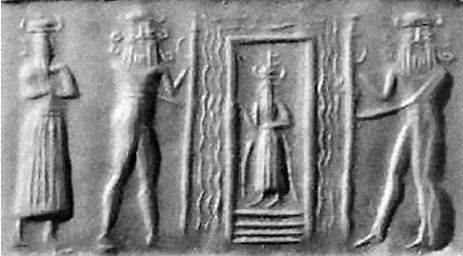
Second-millennium BCE Babylonian cylinder seal,
thought to depict Utnapishtim (the Babylonian
equivalent of biblical Nuah) in the Ark; others
read
this seal as a depiction of the water-god Ea. |
|
| January 2008 |
| Conference
preparations In January
2008, Eric Venbrux (professor of religious
anthropology, faculty for religious studies,
Radboud University, Nijmegen, Netherlands) and
Wim van Binsbergen started their preparatory work
as joint convenors of the 2nd Annual Conference
of the International Association for Comparative
Mythology (see above, under August 2008)
|
| |
|
|
| Paper
on wisdom as a key to intercultural epistemology
now in the press WISDOM:
AFRICAN AND GLOBAL -- Wim van Binsbergen's key
note addess presented at the International
Symposium on Expressions of Traditional Wisdom,
Brussels, Royal Academy of Overseas Sciences,
September 2007, has now been worked into an
extensive paper, currently in the press with the
Royal Belgian Academy for Overseas Sciences:
Wim van
Binsbergen, in press, ‘Expressions of
traditional wisdom from Africa and beyond: An
exploration in intercultural epistemology’;
click for PDF;
a shorter version has also been prepared, and
is now in the press in the Symposium proceedings,
click here for shorter version (PDF):
Wim
van Binsbergen, in press , 'Expressions of
traditional wisdom: What Africa can teach the
world today' .
| ABSTRACT FULL
VERSION: Expressions of
traditional wisdom from Africa
and beyond: An exploration in
intercultural epistemology:
Wisdom is initially defined (cf.
Aristotle) as creative practical
knowledge that allows one to
negotiate the contradictions of
human life (especially in less
rule-governed domains manifesting
uncertainty and incompatible
multiple truths), thus accepting
that human life is social and
finite. After indicating (1) the
resilience of wisdom as a topic
in modern thought and science, a
overview follows of wisdom in
various periods and regions of
the world (2). (3) The dilemma of
expression of wisdom: while
scholarship thrives on specialist
explicit language use, wisdom is
often secret and risks being
destroyed by expression and
translation. (4) Offsets
expressions of traditional wisdom
against four modes of ‘tacit
modern unwisdom’ (in such
fields as corporality, conflict
regulation, the concept of mind,
and myth). (5) Can wisdom be
transmitted interculturally,
within and outside an academic
context, and by what mechanism of
situational oppositional framing
is traditional wisdom both an
alterised object of study and a
site of identification and
encounter. (6) Defining the
specific difference between
scientific and wisdom modes of
knowing, in the former’s
reliance on standard, repetitive,
intersubjective procedures of
knowledge formation embedded in
limiting conditions. (7) The four
modes of tacit modern unwisdom
(cf. 4) are then contrasted with
African perspectives. (8) Finally
intercultural philosophy is
argued to spring from a situation
(today’s globalisation)
where Western mainstream
philosophy has to give way to a
wisdom perspective as defined
above. |
|
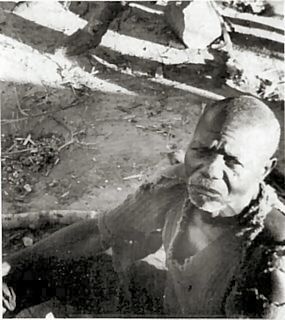
An
African sage: The nature prophet,
witchfinder and village headman Lubumba,
photographed by the site owner at
Njonjolo, Kaoma district, Zambia, Fall
1973; cf. van Binsbergen,m W.M.J., Religious
change in Zambia, London / Boston:
Kegan Paul, 1981.
|
| ABSTRACT
SHORTER VERSION: Expressions of
traditional wisdom: What Africa
can teach the world today: Wisdom
is initially defined (cf.
Aristotle) as creative practical
knowledge that allows one to
negotiate the contradictions of
human life (especially in less
rule-governed domains manifesting
uncertainty and incompatible
multiple truths), thus accepting
that human life is social and
finite. The argument begins with
noting (1) the resilience of
wisdom as a topic in modern
thought and science. Next we deal
(2) with the dilemma of
expressionof wisdom: while
scholarship thrives on specialist
explicit language use, wisdom is
often secret and risks being
destroyed by expression and
translation. Section (3) offsets
expressions of traditional wisdom
against four modes of ‘tacit
modern unwisdom’ (in such
fields as corporality, conflict
regulation, the concept of mind,
and myth). The four modes of
tacit modern unwisdom are then
contrasted (4) with African
perspectives, where the human
body is the recognised focus of
wisdom; where conflict management
stresses (at least at the local
level) practical wisdom over
impersonal and divisive rules;
where the human mind is
considered to be porous hence
accessible through extrasensory
means; and where, in the deep
history of Anatomically Modern
Humans, up to 60,000 years ago
the foundations were laid for all
the myth we all live by today,
while also later mythological
developments were to be
percolated all over the world
including Africa. |
|
|
| |
|
|
| Public
defence of the Ph.D. thesis of Julie Ndaya |
 click
here for a link from which the entire book can be
downloaded as PDF
|
18 January 2008: public defence of the PhD
thesis of Julie Ndaya: Prendre le Bic: Le
Combat spiritual congolais et les transformation
sociales, Erasmus University Rotterdam,
supervisors: Wim van Binsbergen and Walter van
Beek, examiners: Valentin Mudimbe, Gerrie ter
Haar and Keebet von Benda-Beckmann |
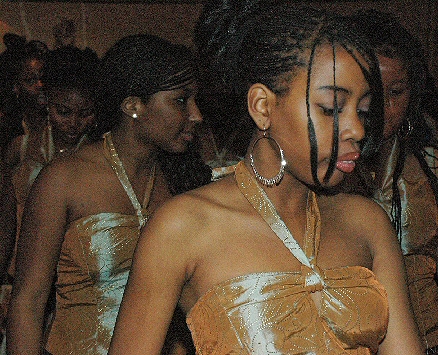 Dutch girls of Congolese background gave
breath-taking performances as traditional dancers
at the celebration following the public defence
|
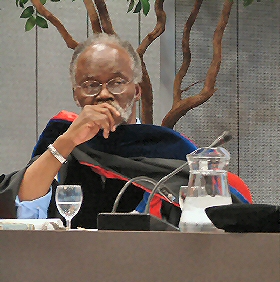
Professor Valentin Mudimbe
(Duke University, Durham NC USA, and chair,
International African Institute) as external
examiner |
Ce livre s'inscrit dans la
très large problématique de la mondialisation
culturelle et des transformations sociales. Il
aborde la manière dont les femmes congolaises,
aussi bien au Congo qu'en Europe, tentent de
reconstruire leur identité en contournant les
différents obstacles culturels. Cette
reconstruction a lieu dans le cadre du mouvement
religieux Le Combat Spirituel. Dans les analyses
l'auteure s'inspire de la littérature au sujet
du changement religieux pour appréhender la
dynamique culturelle mise en place par Le Combat.
Le contexte dans lequel ce groupe est né à
Kinshasa est illustré à travers l'histoire de
vie de la pionnière et les différents cas des
adeptes. Ainsi apparaissent les tensions vécues
par plusieurs femmes provenant des contradictions
entre les différents systèmes culturels qui se
sont disputé le terrain dans leur corps. Le
Combat leur propose une alternative culturelle,
exprimée à travers le terme lingala kobonguana:
être guéri, être repenti. 'Prendre le bic'
présente la production d'une sub-culture, à
travers la dynamique de sélection des idiomes
culturels locaux et mondiaux qui s'accommode
mieux a la réalité au sein de laquelle
protagonistes vivent. |
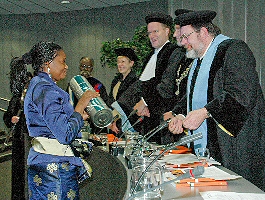 Ndaya receives the doctoral bulla from
the hands of Wim van Binsbergen, while the
co-supervisor Walter van Beek looks on
approvingly
|
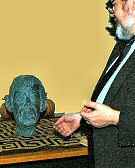
|
Being an artist as
well as an academic knowledge producer, Ndaya
repaid each of her supervisors with a personal
portrait bust secretly prepared on the basis of
Polaroids, and festively handed over at the
celebration following the public defence. Here
Wim van Binsbergen is admiring the final product,
displayed on Kuba raffia cloth from Congo |
|
| current year: 2008 (begins above this line; the closer to
the top of the page, the nearer to 2009); click here
for the years 2006-2007 |
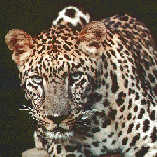



![]()


